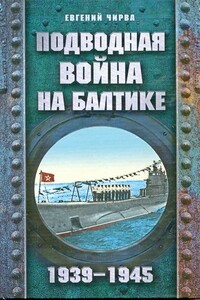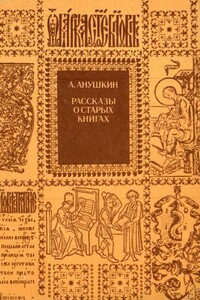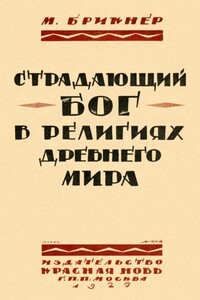Под сенью Святого Павла: деловой мир Лондона XIV — XVI вв. - [142]
Commercial activity of London men of business was complicated and reflected a contradictory social and economic nature of the 14>th — 16>th town itself.
First of all, merchants carried on a large-scale trade in London, inside and outside England. It was trade, seen as worthy, honorable and pious work, that took the most important part of their minds and required from them manifestation of rationalism, common sense, business activity, professionalism and understanding that their aim was to get additional benefits. Wealth which became the measure of achieved success and social importance caused a complicated conflict with some elements of Christian consciousness. How to use this wealth and not to be cast into hell-fire, but to provide for the family and close people was the problem which aldermen tried to solve in their wills. Understanding of the risk that accompanied their profession and the desire to provide their safety incited aldermen to search for God's and saints' protection which is reflected in a widely spread practice of sacrifices recorded in their wills. In fact, it can be said that the merchant class worked out a new type of religiousness which combined the belief in God and fear of after death punishment with a commercial approach to the so called “good works” that brought success in the land of the living and a reward after death. Great opportunities for trade and having income were given by livery, merchant by nature, companies whose members were merchants-aldermen. Besides them in the 14>th -16>th centuries there were also family associations, companies of merchants-? of Calais and merchants-adventurers, and a number of new corporations that emerged and functioned on share principles in the 16>th — the beginning of the 17>th centuries (Moscow, Levant, East Indies and so on). It is important to note that they all united and attracted to cooperation not only London aldermen from various livery companies but other merchants from the capital and provinces and representatives of English noblemen and church as well. A considerable number of people from different social groups were involved into the sphere of trade and interacted successfully which led to the expansion of trade and increasing of its volume. As aldermen were among the biggest shareholders, they were those who received the main profit from it.
It was especially seen in the 16>th century when a considerable expansion of the scale and trade spheres of London aldermen took place. There are solid grounds for speaking about the connection of some London business community representatives of that time with the process of formation of new, organized on early capitalist principles production. Men of business from the capital not only started to export the English industry products but also supplied the whole branches with imported raw material: cloth making, cotton manufacture, shipbuilding, mining industry and metal manufacture. Besides, some aldermen of the second half of the 16>th century took part in organizing pirated businesses and colonial expeditions investing into them big money but at the same time making a huge profit.
Another important sphere of London merchants' economic activities was lending operations that connected them with representatives of different social groups. London men of business lent money to merchants from livery companies, craftsmen from the capital and provincial merchants, clergymen, noblemen and the crown. Such broad social communications not only reflect the degree of this social community financial might, which is, of course, very important, but they also show the level of development of economic ties among towns and regions of England and the nature and scale of social interaction among various classes and inside class groups.
Recognizing priority significance of commercial and financial activity for men of business in London of the 14>th — 16>th centuries, it is necessary to note that many of them were also owners of land and real estate in the town and various counties of England. During this time capital received from trade was actively invested into buying land and property by the richest London class of merchants. This was caused by different factors: by special significance of land property at that time, for reasons of social prestige, by the necessity of reducing economic risks and providing guaranteed income, food and raw material. With regard to the town we should speak mainly about commercial by its nature possession of houses. In particular, aldermen rented not so many parcels of land as premises that brought a considerable income to town: shops, hotels, dwelling houses, workshops, shipyards and so on. If land was rented, it was more often used for development. Transactions in land owning concluded by London merchants-aldermen covered a wide social range: representatives of various categories of citizens (merchants, petty traders, and craftsmen), noblemen, church and monasteries. Aldermen not only strengthened their position in the city economy but partly created rather dangerous competitors for themselves, especially in church and monasteries and inevitably came into the zone of conflict with them. In full it showed up in the second third of the 16

Книга рассказывает об истории строительства Гродненской крепости и той важной роли, которую она сыграла в период Первой мировой войны. Данное издание представляет интерес как для специалистов в области военной истории и фортификационного строительства, так и для широкого круга читателей.

Боевая работа советских подводников в годы Второй мировой войны до сих пор остается одной из самых спорных и мифологизированных страниц отечественной истории. Если прежде, при советской власти, подводных асов Красного флота превозносили до небес, приписывая им невероятные подвиги и огромный урон, нанесенный противнику, то в последние два десятилетия парадные советские мифы сменились грязными антисоветскими, причем подводников ославили едва ли не больше всех: дескать, никаких подвигов они не совершали, практически всю войну простояли на базах, а на охоту вышли лишь в последние месяцы боевых действий, предпочитая топить корабли с беженцами… Данная книга не имеет ничего общего с идеологическими дрязгами и дешевой пропагандой.

Автор монографии — член-корреспондент АН СССР, заслуженный деятель науки РСФСР. В книге рассказывается о главных событиях и фактах японской истории второй половины XVI века, имевших значение переломных для этой страны. Автор прослеживает основные этапы жизни и деятельности правителя и выдающегося полководца средневековой Японии Тоётоми Хидэёси, анализирует сложный и противоречивый характер этой незаурядной личности, его взаимоотношения с окружающими, причины его побед и поражений. Книга повествует о феодальных войнах и народных движениях, рисует политические портреты крупнейших исторических личностей той эпохи, описывает нравы и обычаи японцев того времени.

В книге рассказывается история главного героя, который сталкивается с различными проблемами и препятствиями на протяжении всего своего путешествия. По пути он встречает множество второстепенных персонажей, которые играют важные роли в истории. Благодаря опыту главного героя книга исследует такие темы, как любовь, потеря, надежда и стойкость. По мере того, как главный герой преодолевает свои трудности, он усваивает ценные уроки жизни и растет как личность.

Имя автора «Рассказы о старых книгах» давно знакомо книговедам и книголюбам страны. У многих библиофилов хранятся в альбомах и папках многочисленные вырезки статей из журналов и газет, в которых А. И. Анушкин рассказывал о редких изданиях, о неожиданных находках в течение своего многолетнего путешествия по просторам страны Библиофилии. А у немногих счастливцев стоит на книжной полке рядом с работами Шилова, Мартынова, Беркова, Смирнова-Сокольского, Уткова, Осетрова, Ласунского и небольшая книжечка Анушкина, выпущенная впервые шесть лет тому назад симферопольским издательством «Таврия».

В интересной книге М. Брикнера собраны краткие сведения об умирающем и воскресающем спасителе в восточных религиях (Вавилон, Финикия, М. Азия, Греция, Египет, Персия). Брикнер выясняет отношение восточных религий к христианству, проводит аналогии между древними религиями и христианством. Из данных взятых им из истории религий, Брикнер делает соответствующие выводы, что понятие умирающего и воскресающего мессии существовало в восточных религиях задолго до возникновения христианства.